
Exeo 101:
Breaking Down The Art
Dive into the Background and Fundamentals.

dave4506
Little editorial notes from a studio team member.
Terrene Exeo is one of the most technically challenging and expressive projects made by Pob Studio. Because of that, we are going to great lengths to capture the journey from a year ago to now and teach/share how Terrene Exeo works.
Quick Primer
Terrene Exeo is a first-of-its-kind NFT collection of interactive generative art, created from NFT collection smart contracts on Ethereum.
Let’s break that down further.
Each NFT collection on Ethereum has a token contract address that tells us details about the collection, such as who its token holders are and other relevant information. You can find an NFT collection contract address on OpenSea or Etherscan.
We designed a system that gathers information from Ethereum with contract addresses to generate art. The appearance of the art generated is determined by the details found in the smart contract used to create it. From the details found in an NFT collections smart contract, we developed worlds that resemble cityscapes full of token holders as their residents. Each collection is different and therefore, each Terrene Exeo is characteristically unique with its own community, story and history, that lives directly on Ethereum.
Terrene Exeo reveals hidden depths in the archives of Ethereum and sheds light on collections that are popular today. This gives collectors the opportunity to dig out treasures of new information, discover interesting stories to tell, and find different meaning in their collections. With Terrene Exeo, experience the profound wonder of what’s embedded in the fabrics of Ethereum.
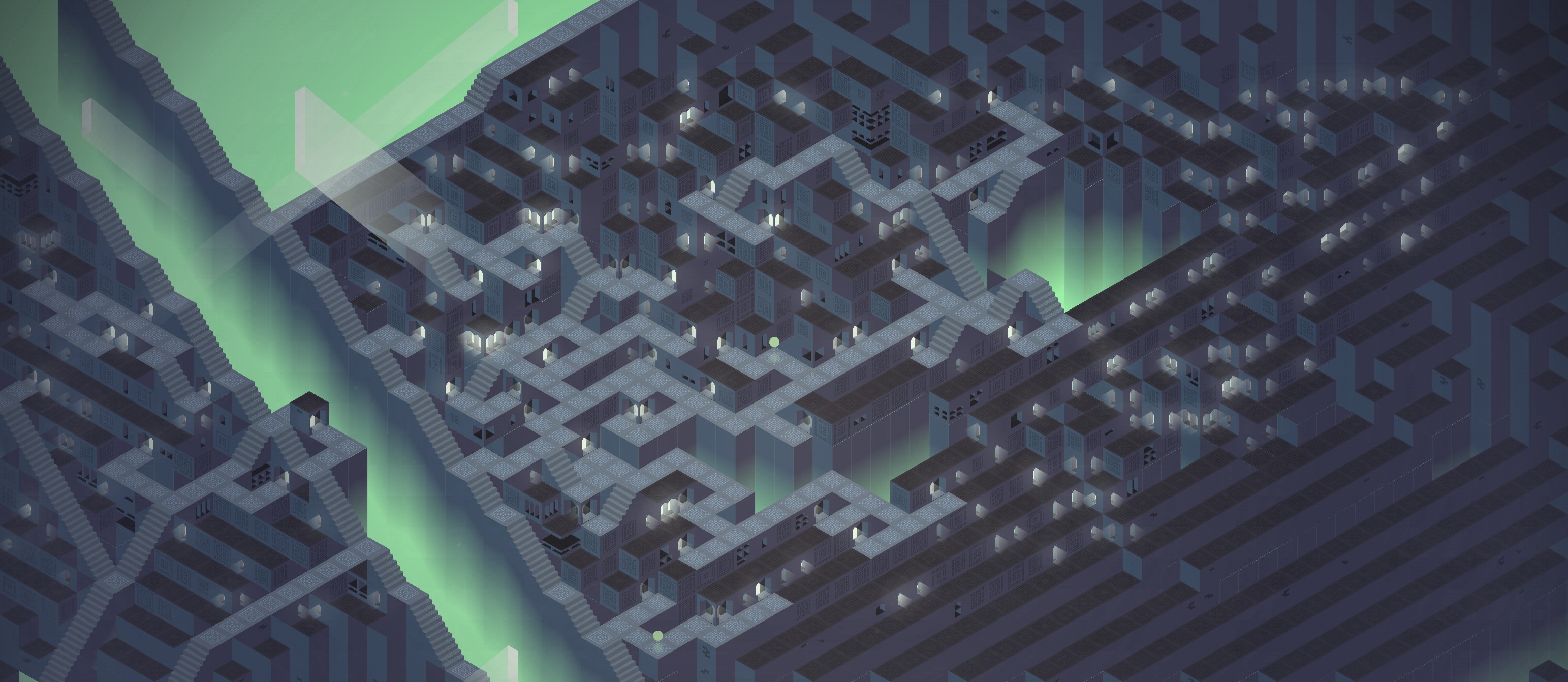
Azuki #0-#499
Experience Contract Art
Generative art created with smart contracts is called contract art, as we define it at Pob Studio.
Contract art is only possible on the blockchain and is therefore, fully onchain. Because Terrene Exeo is onchain, it is possible to generate art that is truly live and dynamic. As NFT collections see changes in their collectors, Terrene Exeo NFTs will dynamically update to reflect these changes. This can result in small or large changes to the appearance of your art. Your art changes and evolves with time, block by block, forever.
Every time your metadata is refreshed, data obtained from NFT collections on Ethereum is orchestrated into generative art that metaphorically has a pulse. This means that if an NFT collection grows in size or token supply, Terrene Exeo will continuously to grow with it.
Building at the highest standard
Learn About How Stuff works here!
As mentioned, Terrene Exeo is fully onchain. This guarantees that your NFT will exist on Ethereum for as long as the EVM exists and no other layer of storage for your NFT and its metadata is needed. There’s no use of IPFS or any other data storage providers. No server is ever involved in the process of securing your NFT and everything is generated right on Ethereum. This means our collectors can have confidence that their Terrene Exeo NFT and its metadata will always be accessible and controlled by them. This is important to us.
You can learn more about our approach to creating NFT’s that are built to last in our breakdown of the The Collector Std. The Collector Std. is a design philosophy for NFT Production that we created to prioritize collectors and decentralization.
Terrene Exeo is our first project built with The Collector Std. We created this standard hand-in-hand with Terrene Exeo to build a project that we believe is true to our values at Pob Studio, true to the values of collectors in our industry, and sets a higher standard for NFT Production.
Getting Back To Our Roots.
Terrene Exeo gets back to the roots of our first project, Hash, where we first started exploring contracts to create art and is similar in spirit, to the way we used Transaction Hash records to create generative art.

dave4506
Little editorial notes from a studio team member.
In so many ways, Terrene Exeo is a continuation of the story that birthed the studio. We started by telling our stories about Ethereum, and 3 years later, we are telling the most exciting story yet.
Hash - Genesis collection, released in early 2020, was a brainchild developed from exploring the boundaries of NFTs and the possibility of creating art with smart contracts, or contract art. In what may have been the first ever demonstration of contract art, Hash was created from smart contracts that transform Transaction Hash records on Ethereum into generative art reflecting moments of blockchain history.
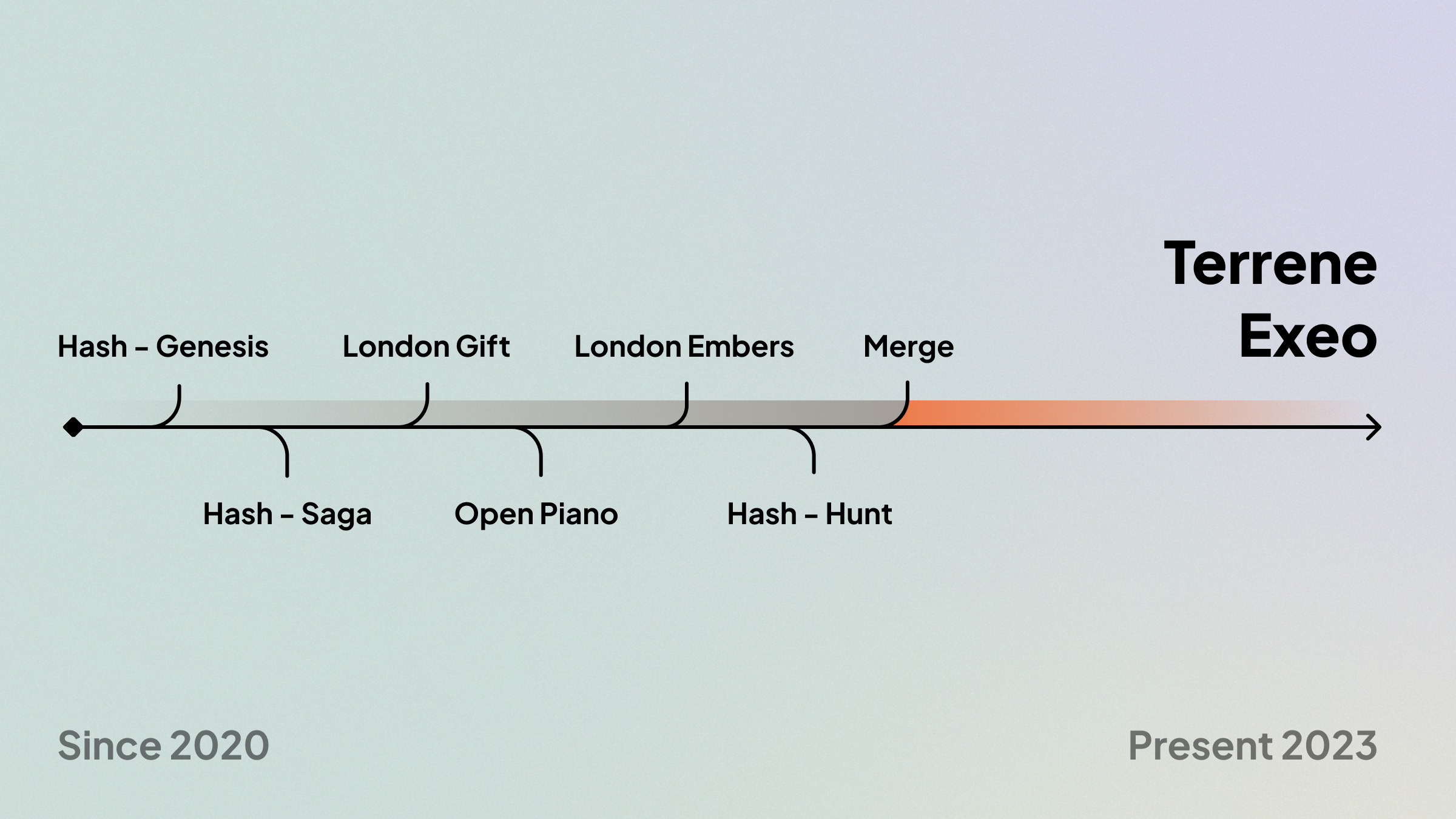
Terrene Exeo goes further than Hash by exploring the creation of art with smart contracts in a way that is fully onchain. Since Hash, we have been consistently researching onchain development. We were looking to create a project that builds off our past knowledge and Terrene Exeo is both a capstone and continuation of all that we have learned since Hash. Terrene Exeo explores the use of NFT collections smart contract addresses, or token contracts, to generate art. This is fundamentally different, but reminiscent of our early work.
Visualizing the Interconnection of Collectors and NFT Collections.
Terrene Exeo is expressionist art and is self-reflective. Terrene Exeo reflects deeply on the interconnection between collectors and NFT collections. We capture the essence of this relationship in a visual interpretation of these connections at large and explore the underlying ways we are connected to each other on the blockchain, evoking a sense of awe and intrigue as we gain perspective on where we fit into the Eth-verse.
We know that collecting NFTs is a deeply personal and often emotional journey. Each NFT has its own story and value, and for collectors, these digital assets can create a profound sense of connection and unity.
More people are participating in this shared experience of NFT collecting and we're seeing the formation of tight-knit communities that transcend the blockchain. Around the word, people are coming together, fostering friendships and collaborations rooted in the NFTs they hold.
Terrene Exeo visualizes relationships between NFT collectors and collections in a way that gives you the capability to see relationships in communities in real-time. Worlds in the form of vibrant cities capture the essence of these communities and highlight the interconnection between token holders. Roads, Highways, and other features in the landscape of the art form connections with holders in a visual metaphor.
Breaking Down The Art
How do Roads, Highways, Lots and other features appear the way they do?
Despite the vibrant 3D appearance of each Terrene Exeo, the art generated is entirely 2D and is created without the use of any 3D-engine. The 3D appearance of the art has been accomplished with the use of isometric patterns, shading, and color trickery.
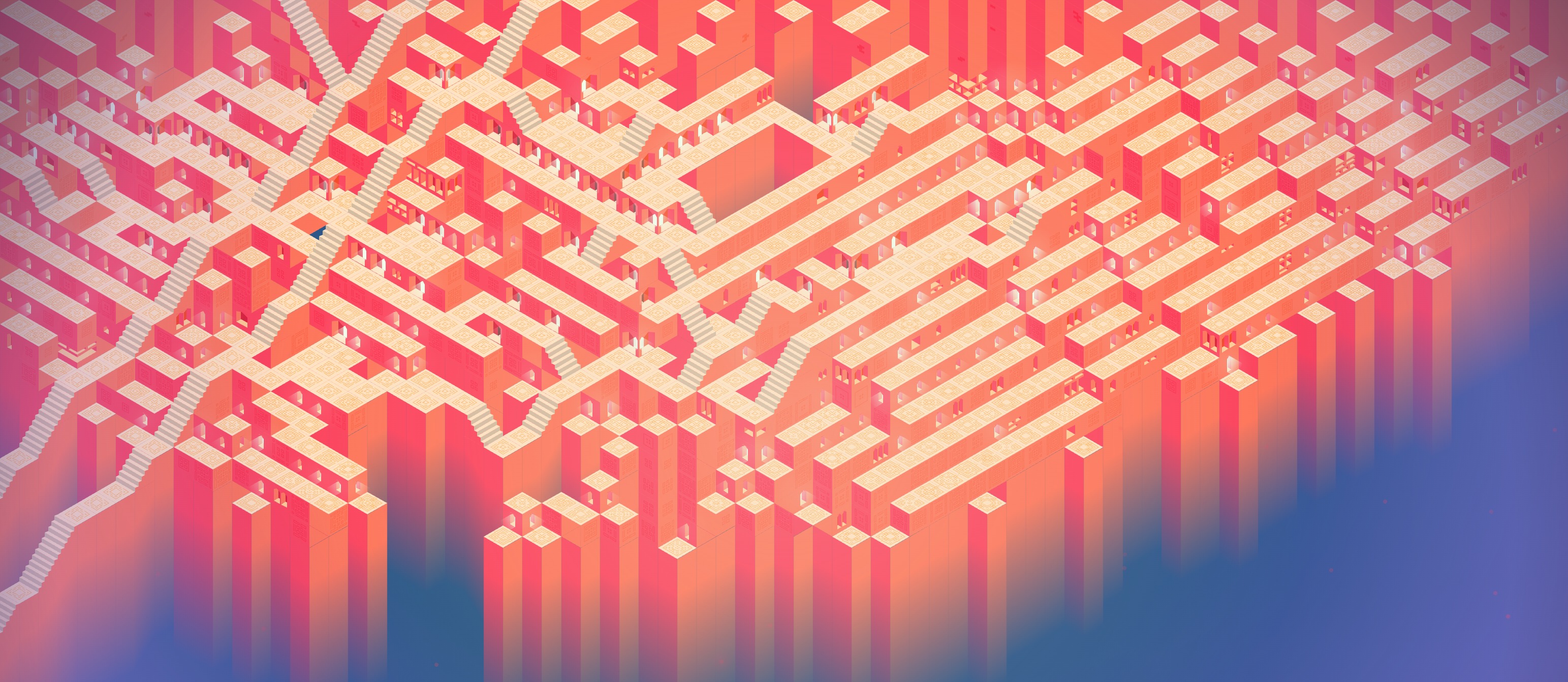
Subscapes #0-#499
The color palette of a Terrene Exeo is derived from the contract address of an NFT collection. We created over 100 palettes for contracts generate color combinations from.
The Composition of Terrene Exeo
The composition of each Terrene Exeo is generated directly with a token contract address. As we previously highlighted, smart contracts of NFT collections on Ethereum contain information about each collection and its respective token holders.
Terrene Exeo gathers this collection data and reimagines each token ID owned by collectors as an isometric cube that we call a Lot. These isometrics cubes vary in form and features and are determined by the amount of ETH held by address of the token owner.
As mentioned, the texture and design of a Lot are dependent on the token ID owner. Token ID owners directly influence the appearance of Lots by determining the textures and design that appear.
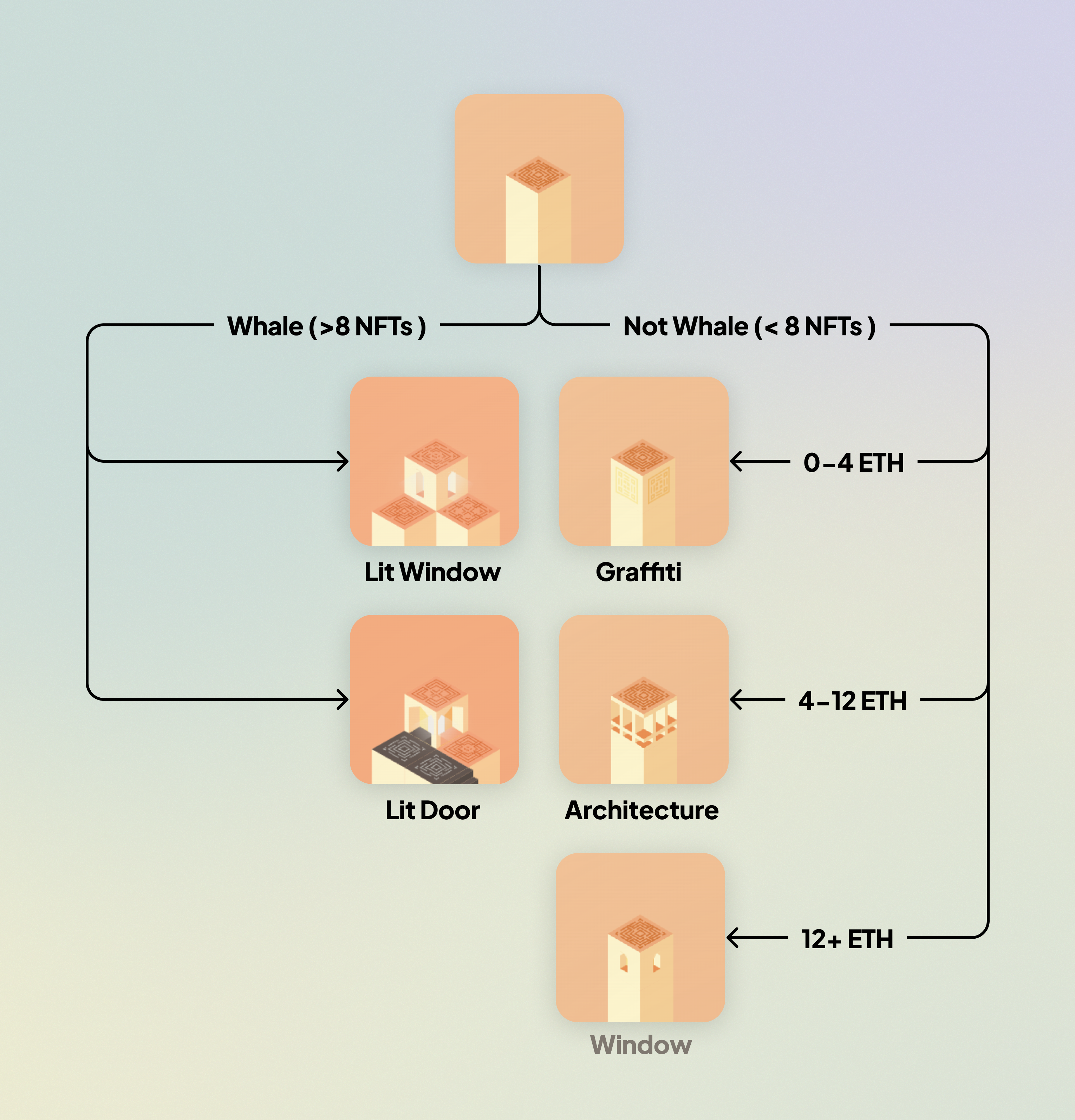
Multiple Lots that have the same token owner will generate the same texture of art and a whale, for example, would have multiple Lots that all appear with the same texture.
Textures can be recognized by the cube facet cutouts, where the brutalist style cubes appear as squares and windows appear as pentagons. Grafitti appears as subtle markings on the side of the Lots.
Token owners are grouped together into neighborhoods of Lots. This allows us to visualize shapes and map out the data in creative ways. Our design takes the data of 500 token holders for any NFT collection to generate a Terrene Exeo and no two Terrene Exeo NFTs can represent the same neighbourhood of token ID’s in any one collection.
A Lot emitting light from it has hit the minimum threshold to qualify as a whale. You will appear as a whale in a collection if you have a minimum of 8 NFT’s. For smaller collections, with respect to total supply, the way we determine the minimum threshold and who appears as a whale is determined on a percentage basis. In such a case, a percentage of the top holders will a qualify as the whales.
All light-emitting Lots are generated as windows or doors, irrespective of the amount of ETH you own. With respect to size windows, this is also correlated to the amount of ETH held by a token ID owner.
In some cases, a Lot owned by a whale will also generate doors. If a door appears, an algorithm will attempt to create a path and map out a road from the door to the closest road. These are called Connecting Roads. On the odd occasion, this can also create a dead end, but typically, Connecting Roads will be generated to connect a Lot containing a door to other roads in the composition.
It should be noted that not every cube will map to a token, and some are generated purely as visual elements. If a cube is without a texture on the left and right sides, it has not been mapped to a token. Nor have cubes that feature a brick texture.
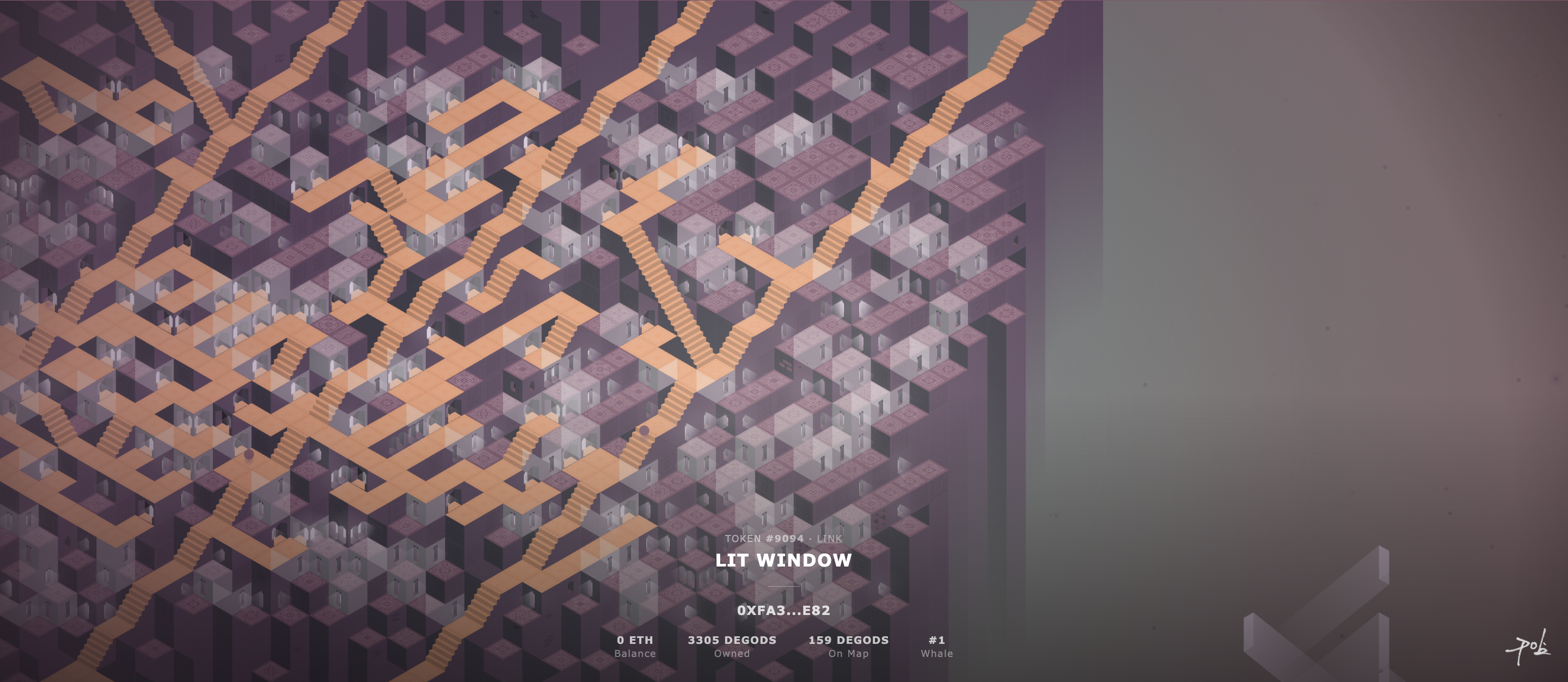
Lit Windows Galore
Compositionally, Terrene Exeo generates Voids, areas of know Lots, that emit animated particles to add an atmospheric effect. The number of Voids that appear is influenced by the whales of a collection and, particularly, a system we call the Whale Point System. This Whale Point System helps us mathematically determine the compositional features that are generated.
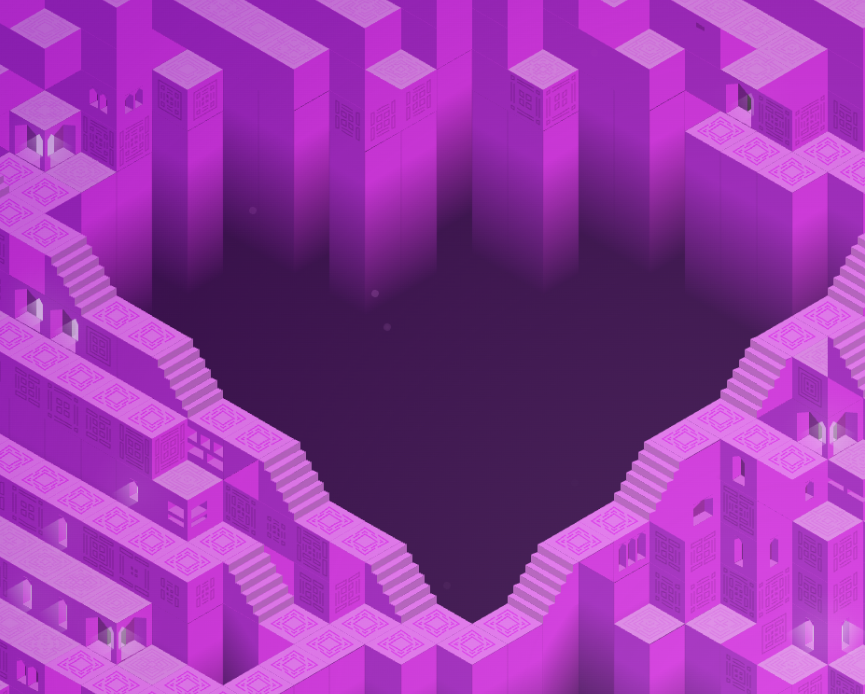
Void
The Whale Point System is responsible for the generation of many key elements of Terrene Exeo. In addition to Voids, Highways, Freeways, and God Ray effects are all generated deterministically by the Whale Point System.
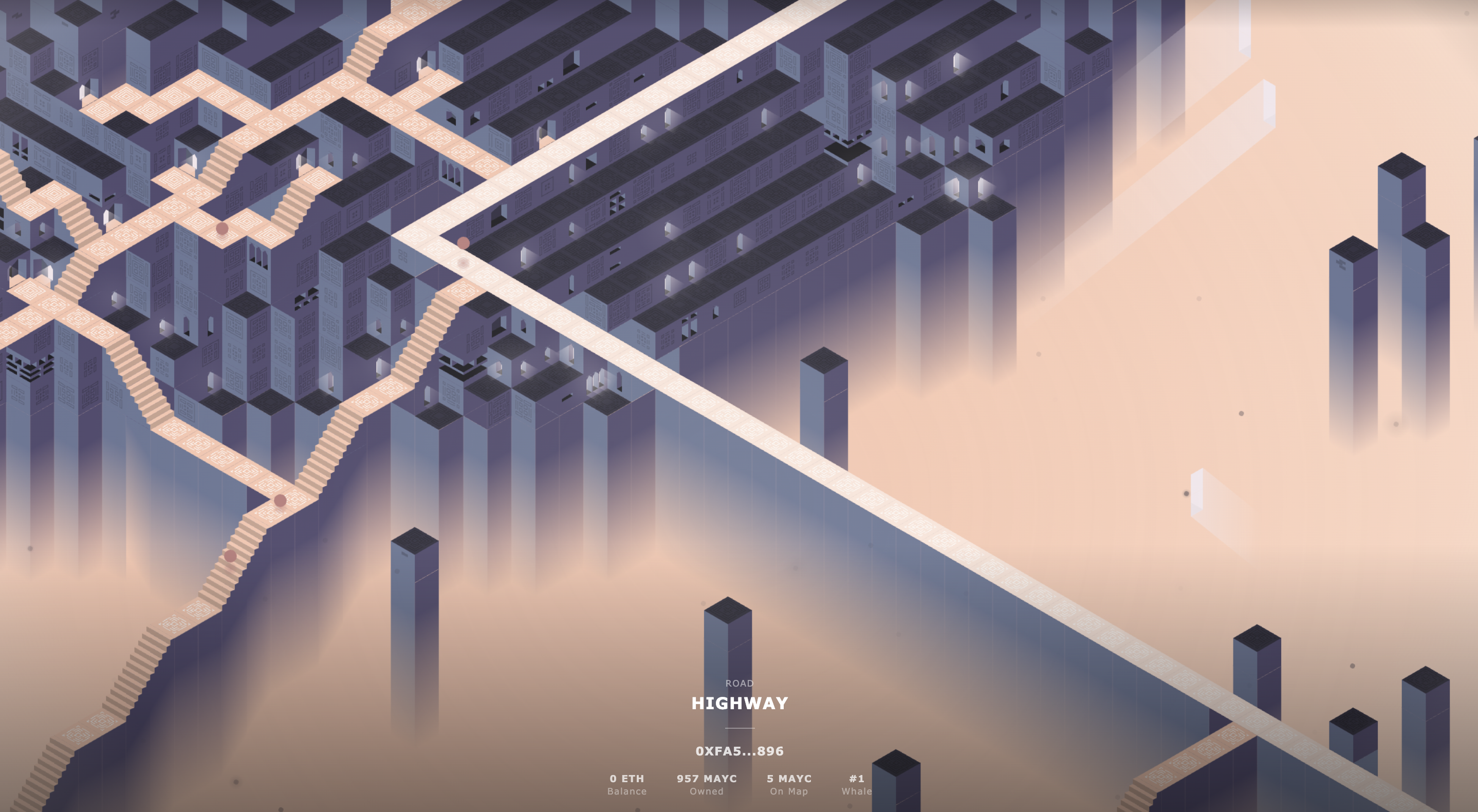
Highway
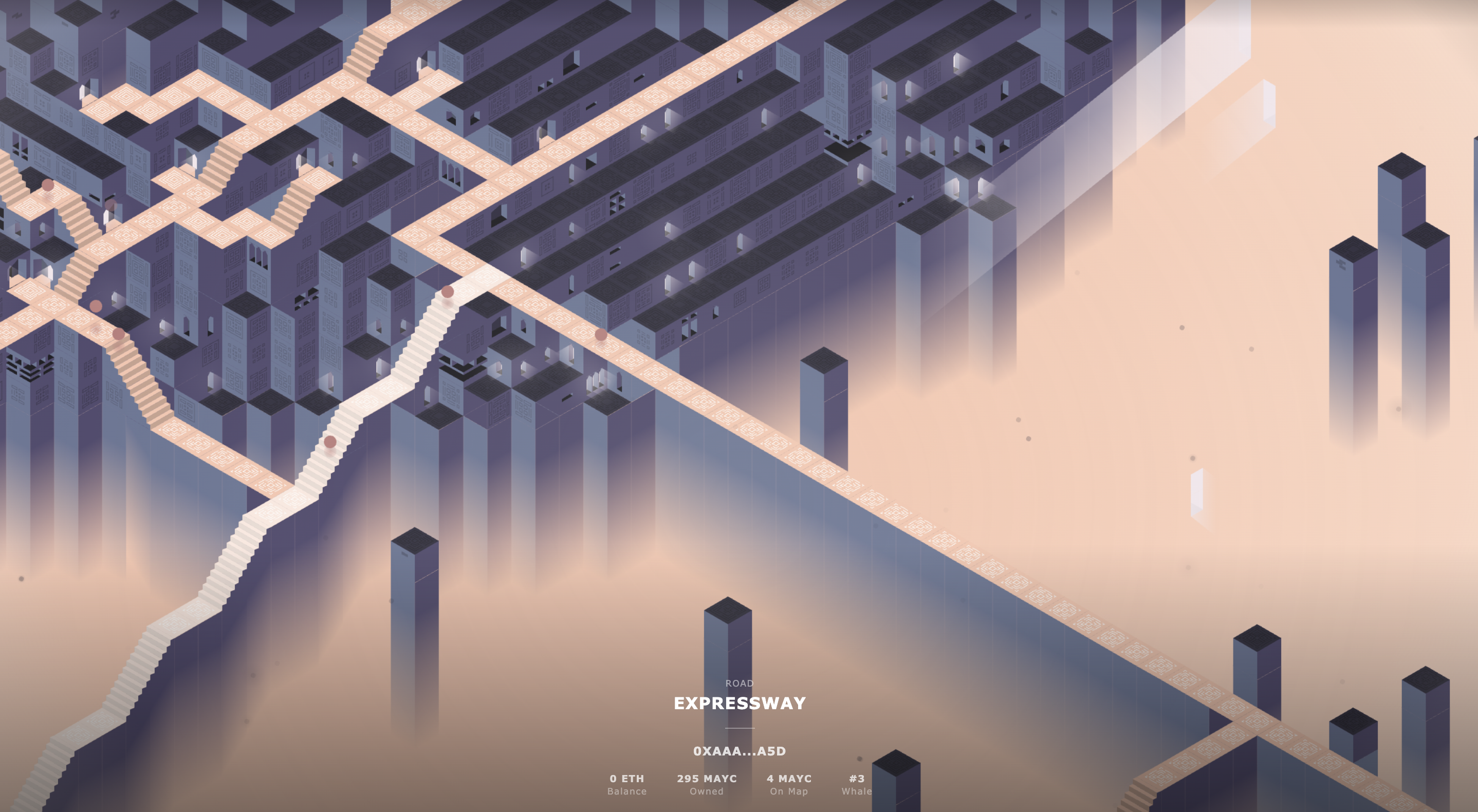
Expressway
There is an order to how features are generated. The first Highway is generated based on the largest whale's address and subsequent elements are then generated from the next largest whale down to the smallest.
Additionally, Terrene Exeo will sometimes generate bouncing balls. These bouncing balls are entirely random. There is no correlation between balls and the roads they appear on or the duration for which they appear. The path they follow and how they behave are completely random. These bouncing balls simply reflect that each world is live and dynamically generated.
If you found this insightful, we are also going to provide a technical breakdown of how Terrene Exeo is generated at a protocol level and dive into the mechanics that make each collection unique. Furthermore, we will be diving into the limits of Terrene Exeo for our super users to learn more about the system. There’s a lot to unravel about the mechanics behind Terrene Exeo.
Built For Collectors.
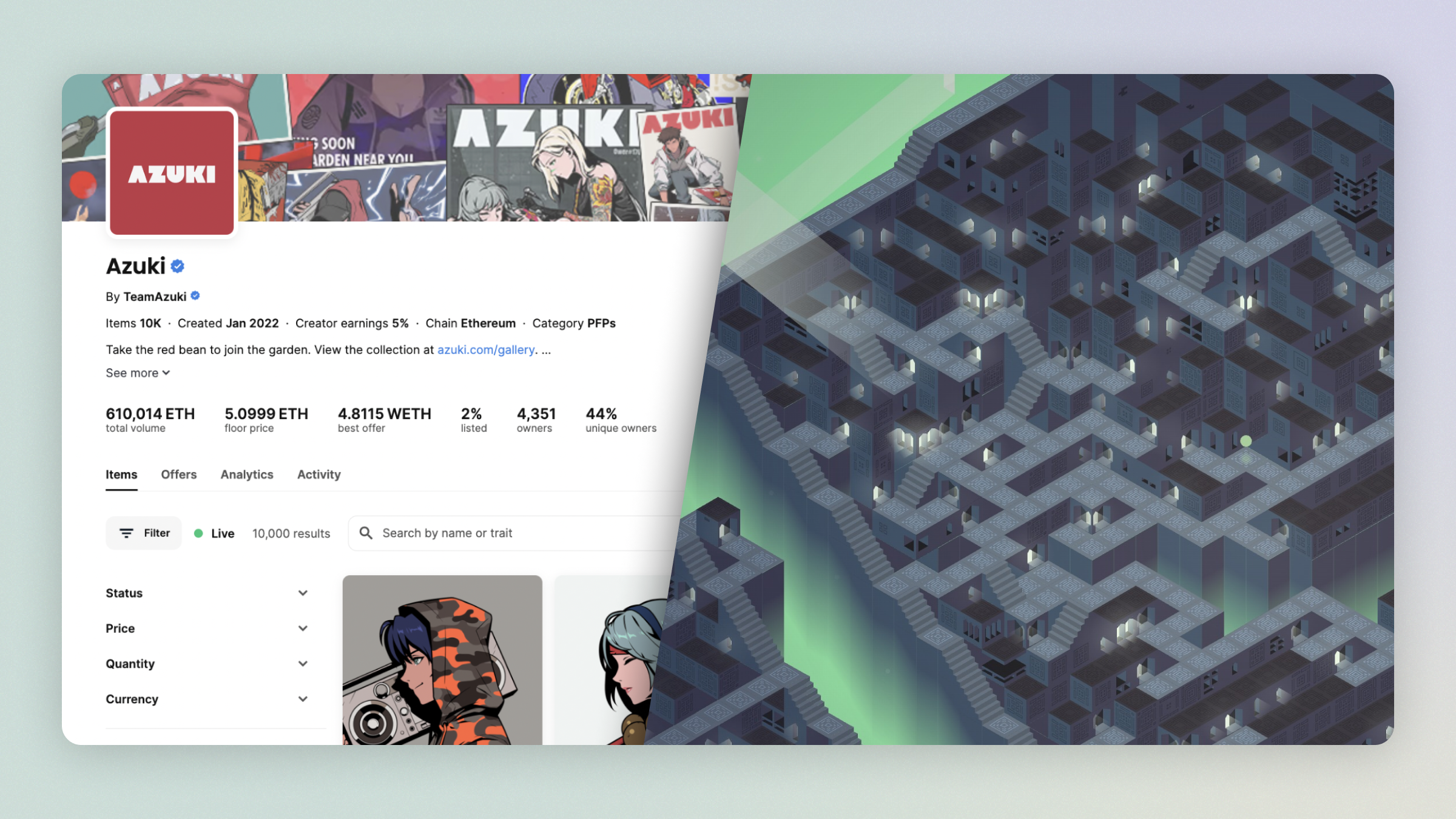
A year in the making, Terrene Exeo is finally here. We couldn’t be more excited to hear about your experiences, to see the art you generate, and to hear about the things you discover within your communities. We have yet to reach the upper bounds of what is possible with Terrene Exeo. We know members of our community will discover use cases for Terrene Exeo that we haven’t thought of at Pob Studio and this excites us. Worlds will be discovered that we haven’t seen before. New and old collections brought to life. The journey is just beginning and we can’t wait to share Terrene Exeo with the entire Ethereum community.
We put our hearts into this project and we believe it's our best work yet. Terrene Exeo was truly built by collectors, for collectors, and we hope you love we what we created.
With Love, Pob Studio

"You either die a hero, or live long enough to be the villain" - Harvey Dent
© 2024 Proof of Beauty, LLC.